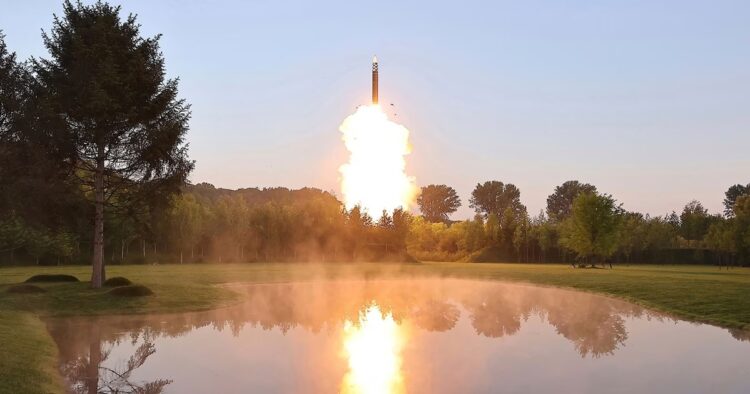North Korea claimed on Thursday that it successfully tested a multiwarhead missile, marking a significant advancement in its military capabilities under leader Kim Jong Un. The launch, reported by North Korean state media, aimed to demonstrate the capability of Multiple Independent Reentry Vehicles (MIRVs) to overcome missile defenses. However, South Korea dismissed the claim, suggesting the missile exploded shortly after launch.
According to North Korean reports, the test on Wednesday focused on the separation and guidance control of individual warheads, with each aimed accurately at designated targets. The missile also deployed a decoy to evade radar detection. South Korean military analysis, however, indicated that the missile likely malfunctioned early in its flight.
Kim Jong Un has prioritized the development of high-tech weapons, including MIRVs, as part of North Korea’s military modernization efforts.
Experts view this test as an initial step in evaluating crucial subsystems necessary for operational MIRV capability. Further tests are expected to refine separation, guidance control, and other technical aspects.
The international community, particularly South Korea and the United States, closely monitors North Korea’s missile developments. The test coincided with joint military exercises involving South Korea, the United States, and Japan, prompting concerns over regional stability and missile defense strategies.
Analysts speculate on the implications of North Korea’s advancements, including potential future tests and their impact on regional security. Questions remain about the extent of Russian assistance to North Korea’s missile programs, highlighted by recent agreements between Kim Jong Un and Russian President Vladimir Putin.
ALSO READ: “North Korea Fires Suspected Ballistic Missile; Japan Issues Precautionary Measures”
The test follows recent escalations in tensions, including North Korea’s protests against U.S. military activities in the region and cross-border provocations with South Korea. The situation underscores ongoing challenges in managing North Korea’s military ambitions and maintaining stability in East Asia.
As North Korea continues to advance its missile capabilities, the international community faces renewed challenges in diplomacy and security. The implications of these developments could shape future geopolitical dynamics in the region, requiring coordinated responses to mitigate potential threats and enhance regional stability.

















Comments